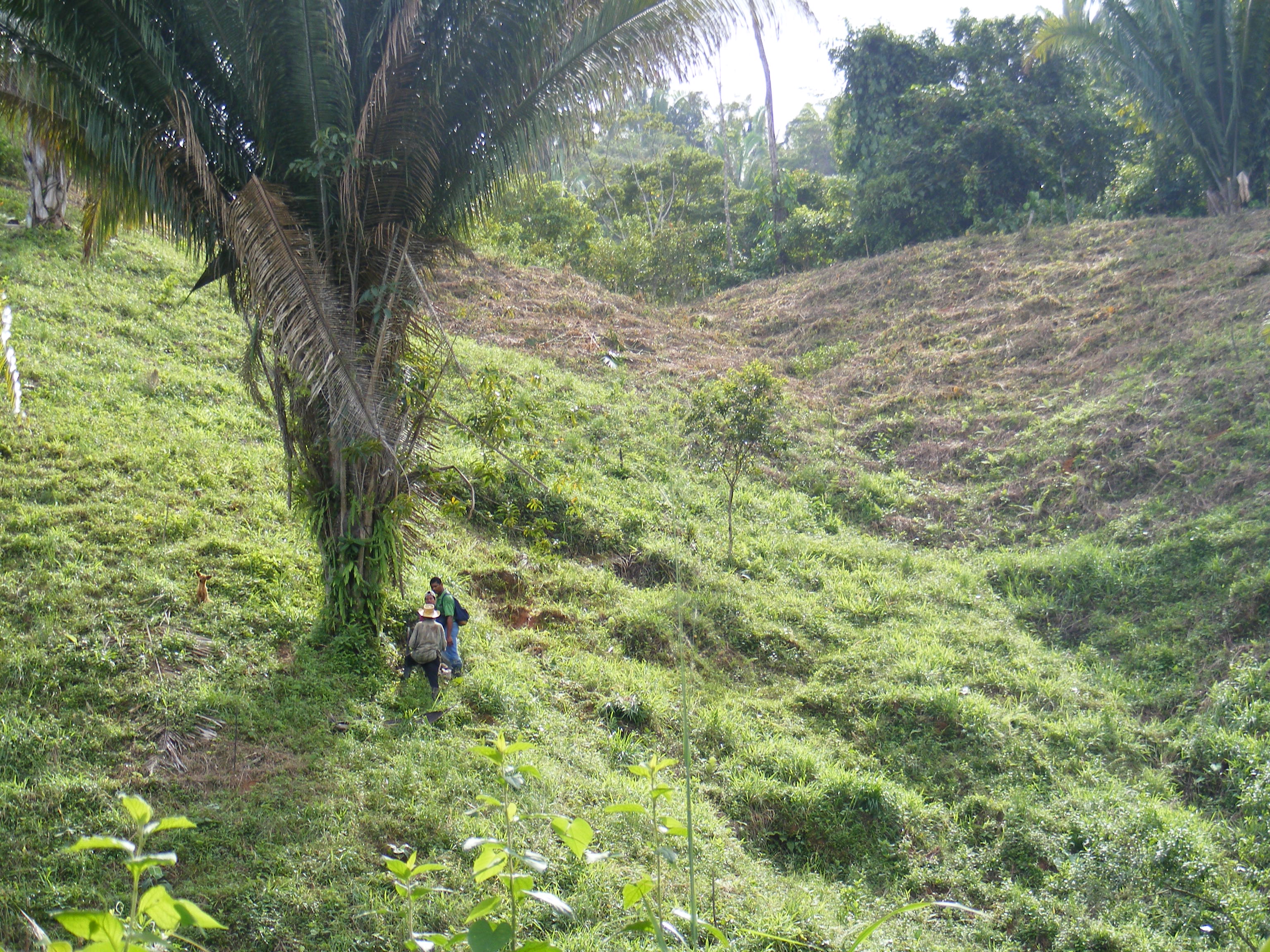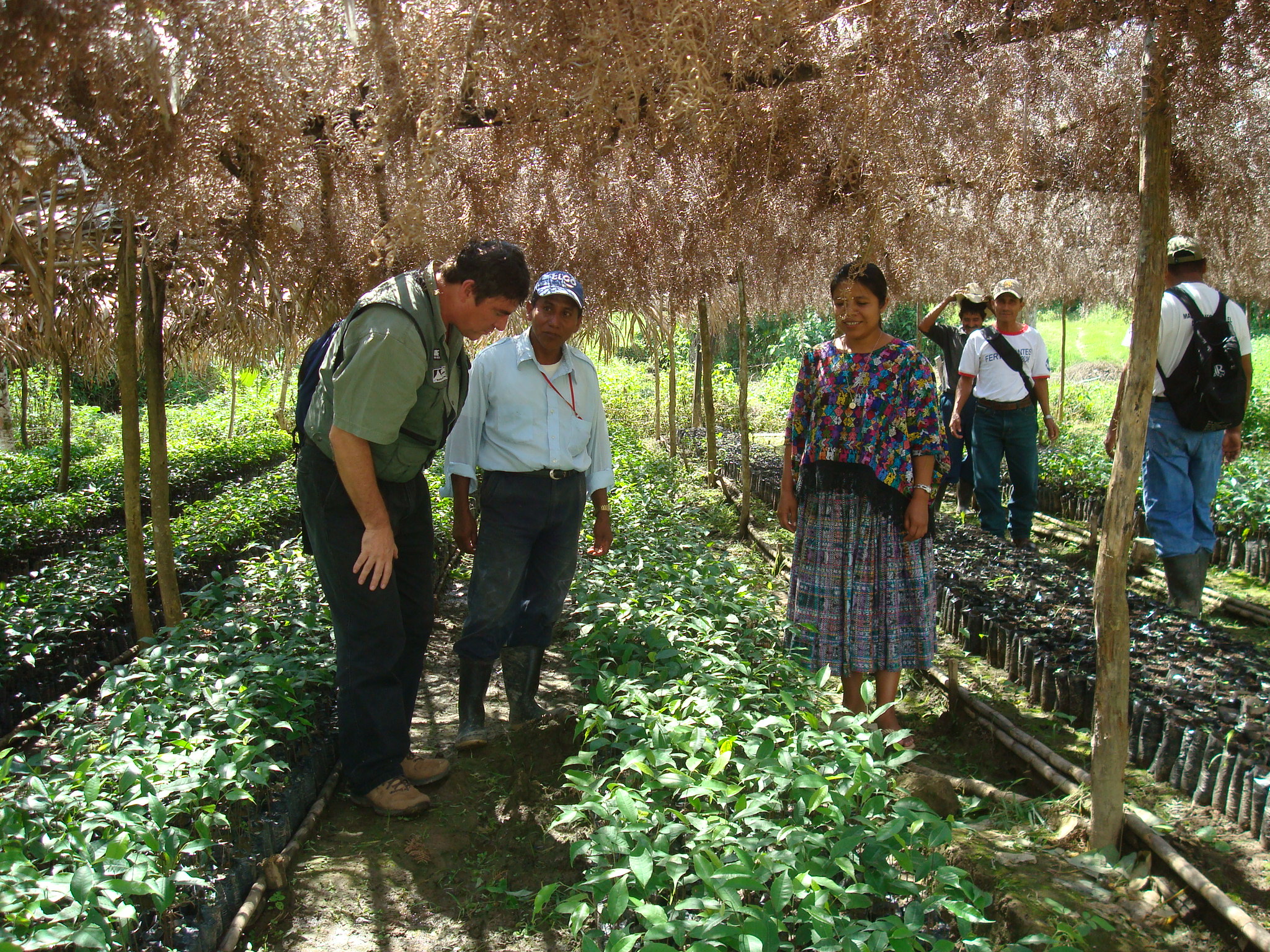A Forest for the Trees
Canadian Volunteers in Model Forests of the Americas
By Sean Kelly

Canadian volunteers take a walk in woods that are models of community stewardship and sustainability.
More than one tree has fallen in Araucanía, Chile, a mountainous area that borders Argentina. But many people heard.
The Araucanía region is a culturally diverse slice of the Andes; indigenous Mapuche-Pehuenche people live here along with settlers of European ancestry. Farming, logging and livestock ranching are how most of the nearly 30,000 inhabitants make a living.
But it’s not an easy life – the geography is steep and rough, the climate harsh. And the soils and the forests have been weakened by bad farming and logging practices.
That’s why a different kind of natural resource management has taken root in the Araucanía region. The ‘Alto Malleco’ Model Forest in Araucanía is spread over roughly 400,000 hectares of landscape. It covers not only native forests but also steppes (barren plains), watersheds, grasslands, scrublands, snow-capped mountains and even a few glaciers. The region is home to the native Araucaria tree (often called the ‘monkey puzzle tree’), a slow-growing, cedar-type conifer susceptible to over-logging. There are three national wildlife reserves and one national park in the area.
This so-called model forest is a form of community stewardship that provides both a place and a process where ‘best practices’ are developed, tested and improved. These models of sustainability are then shared with other communities. Geographically, such a site must encompass an area large enough to represent all of the forest's uses and values. It’s a working landscape of protected areas, farms, woodlots, towns, watersheds and rivers.
Model forests provide a space where those who know and use woodlands can develop a common plan to achieve social benefits, environmental conservation, and economic opportunity. The approach is based on the view that broad-based local participation is the key to long-term success. No two model forests are identical. Some are in low population-density areas, where rural poverty and access to resources are priority issues. Other model forests may be heavily settled areas where urban-rural issues, including water quality, recreation, conservation and biodiversity, feature prominently in the equation for sustainable forest management.
It’s a Canadian idea being put into practice the world over, the methodology supported and promoted by the International Model Forest Network (IMFN). The approach was first brought to the world’s attention at the 1992 United Nations Conference on Environment and Development, held in Rio de Janeiro, Brazil. At this global gathering, better known as the Earth Summit, Canada promised to “internationalize” its innovative model forest program.
What began with an initial 10 sites in Canada has grown to nearly 50 model forests in existence or under development in 22 countries on five continents. Collectively, these sites make up the International Model Forest Network (IMFN). To support these efforts, the IMFN Secretariat was established in 1995. Based in Ottawa, Canada, the Secretariat provides the day-to-day coordination of support and development services to the model forests worldwide.
While environmental sustainability is a core philosophy, model forests are also about people. They provide a space where those who know and use an area’s natural resource base – from small-scale wood harvesters to forest companies, from government agencies to tourism operators – can develop a common plan to achieve social benefits, environmental conservation, and economic opportunity.
At the heart of each independent model forest is a group of people who have different perspectives on the human and natural dynamics within their forest-based ecosystem – viewpoints that are all necessary to make informed, balanced and fair decisions about how to manage the forest and its resources.
“Model forests allow for innovation and experimentation, and the best ideas are shared with other communities and networks,” says Marie-Eve Landry, a Canadian currently in Costa Rica volunteering with the Iberoamerican Model Forest Network. “They also strengthen participatory governance of natural resources in a forest-based landscape.”

That participation could include woodlot owners, small-scale food harvesters, forest companies, indigenous peoples, farmers, parks staff, environmentalists, researchers, community development groups, government agencies, tourism operators, hunters & trappers…all integrating their own interests into the common good. Each model forest organization is largely dependent on volunteer energy and expertise.
There is certainly a growing understanding in the Araucanía region that sowing economic opportunity in the present can also yield environmental benefit in the future. Partners in the Alto Malleco Model Forest include the Chilean national government, municipal governments, farmers, indigenous people, community development groups, and representatives of the agricultural and forestry industries.
Results to date include the bringing together of different stakeholders – including small-scale and indigenous landowners – to develop a strategic plan, as well as the development of projects in sustainable forestry, soil recovery, inter-cultural communication and environmental education. There has also been a renewed emphasis on the harvesting of non-timber forest products; for example, an edible kernel that is gathered from the araucaria tree.
The model forest method was successfully transplanted from Canada to the Americas, and Canadian volunteers have helped it take root. Since 2004, CUSO – one of Canada’s largest non-profit development agencies – has been sending volunteers for two-year-long walks in those woods. So far, 26 volunteers have supported nine model forests throughout the Americas, including the Alto Malleco Model Forest.
While most of these CUSO volunteers have come from Canada, some have been recruited from within the country in question, or from other nations of the Americas. The volunteers have also supported the creation of the Iberoamerican Model Forest Network, a growing regional initiative that links 18 model forests in eight Spanish and Portuguese-speaking countries.
“A model forest is a process and a journey as people plan, implement and participate in projects and activities to achieve their vision,” says Bob Sutton, a volunteer working with the Atántida Model Forest in Honduras. “I have been privileged to live, work and learn alongside my peers here in Honduras, and to join them for part of that journey.”
For more information on model forests the world over, visit www.imfn.net. For information on volunteering overseas, visit www.cuso.org.
Written June, 2008
Sean Kelly is a communications specialist with CUSO, a Canadian non-profit international development organization.
| Return to Top
|
| Articles Archive
| About Our Times |